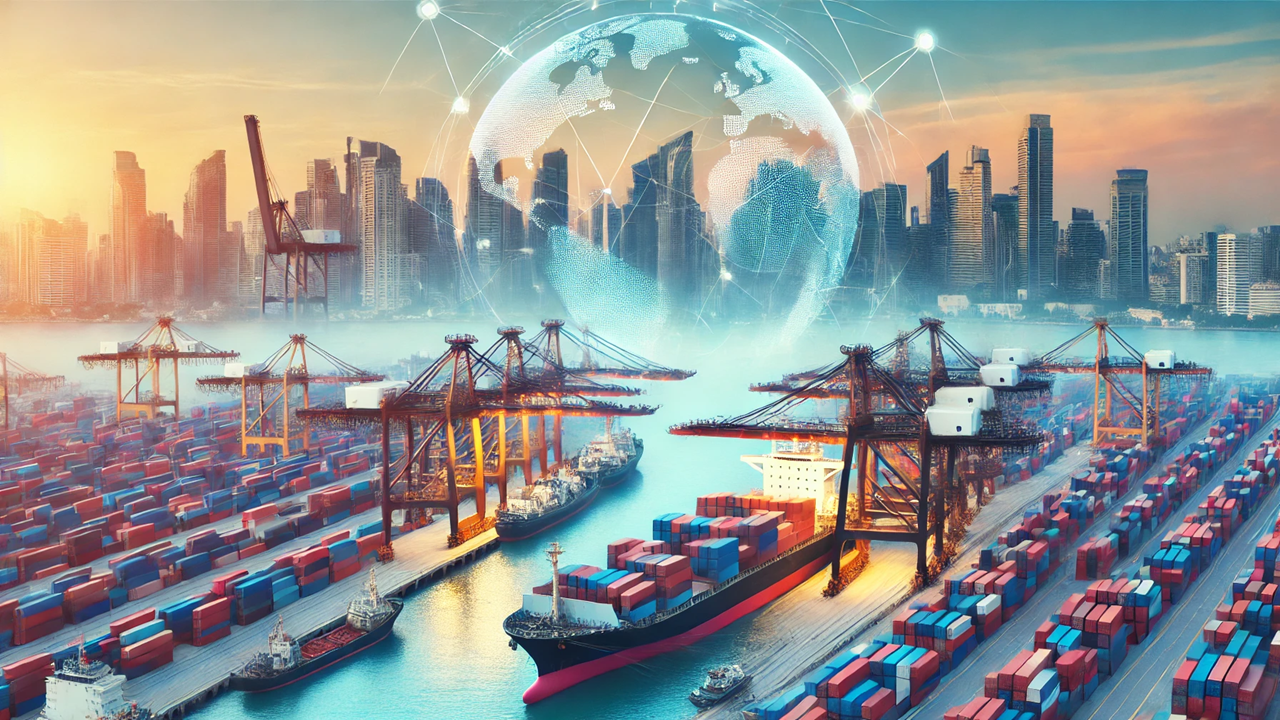Riding the Wave: How Developing Nations Lead Global Trade Recovery
The Global Trade Update by UNCTAD highlights an uneven recovery in global trade, driven by significant growth in developing countries and South-South trade. Key drivers include increased exports from China, India, and the US, while Europe and Africa lag. Sectoral performance varies, with green energy and AI-related products showing strong growth. The outlook for 2024 is positive but influenced by geopolitical tensions and industrial policies.

Global trade is making a comeback in 2024, but the recovery is uneven, according to the latest Global Trade Update by UNCTAD. The first quarter of 2024 saw notable trade growth in developing countries and South-South trade, significantly outpacing the developed world. Key players like China, India, and the United States drove this growth, while Europe and Africa lagged.
In the realm of goods and services, the quarter-over-quarter (QoQ) increase was modest but positive. Goods trade rose by 1%, and services trade climbed by 1.5%. UNCTAD’s projections for the second quarter suggest an even stronger positive trend, with an expected 2% increase potentially adding $250 billion to goods trade and $100 billion to services trade. Despite these gains, the annual price change for traded goods is anticipated to remain negative, although prices are expected to rise in the second quarter.
Regional and Sectoral Disparities
The trade landscape presents a mixed picture across different regions and sectors. For instance, imports surged in Brazil, Russia, and the United States, while China and India showed robust export performance. Conversely, Japan and South Africa continued to see declines. Services trade in major economies stabilized by the end of 2023, although with varied results.
The disparity between developing and developed countries was stark. Developing nations experienced a 2% increase in both imports and exports, whereas developed countries saw only a 1% rise in exports with stagnant import levels. South-South trade also grew by 2% QoQ but declined annually due to reduced imports from developed countries and lower exports from developing nations.
Sector-wise, chemicals, pharmaceuticals, textiles, metals, and minerals experienced a rebound in the first quarter. In contrast, transport and communication equipment saw a decline. On an annual basis, machinery, pharmaceuticals, and road vehicles demonstrated positive growth, while energy and apparel sectors remained subdued.
Industrial Policies and Their Impact
Government interventions in strategic sectors are reshaping the global trade environment. Policies aimed at bolstering domestic industries, such as the United States Inflation Reduction Act, China’s Made in China 2025, and the European Union’s Net Zero Industry Act, are influencing trade patterns. These interventions are particularly focused on high-growth sectors like high-end semiconductors, electric vehicles, and solar panels.
While these policies aim to enhance the competitiveness of domestic firms and ensure supply chain resilience, they also pose significant risks to global trade. Increased supply concentration could marginalize smaller economies and lead to trade fragmentation among major blocs. This could further disrupt global value chains and market segmentations, escalating protectionism and increasing trade costs.
Looking Ahead: Cautious Optimism Amid Risks
The global trade outlook for 2024 remains cautiously optimistic. Improved economic growth forecasts and moderating inflation suggest a reversal of the downward trends seen in 2023. However, geopolitical tensions, rising shipping costs, and the implementation of inward-looking industrial policies present notable challenges.
Positive economic growth, although unevenly distributed, along with rising demand for green energy products and AI-related equipment, is expected to drive trade growth through 2024. Yet, the potential for interest rate cuts in the United States, leading to a weaker dollar, could provide an additional boost to global trade.
In summary, while the recovery in global trade is underway, it is fraught with complexities. The interplay of economic policies, geopolitical factors, and sectoral dynamics will continue to shape the trade landscape. Stakeholders must navigate these challenges to sustain the positive momentum and address the risks that could impede further growth.
- FIRST PUBLISHED IN:
- Devdiscourse
ALSO READ
India's Oil Exports Suffer Amid Falling Crude Prices: CRISIL Report
FIEO Calls for Five-Year Extension of Interest Subvention Scheme To Boost Exports
NTPC Green Energy Set to Launch $10,000 Crore IPO in Early November
Wabtec Locomotive Expands Manufacturing Capabilities for Exports to Africa
India's Gems and Jewellery Exports See an 18.79% Decline in August










